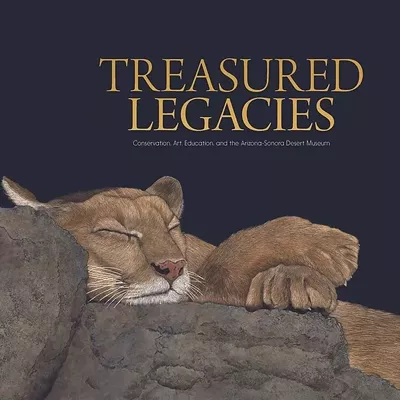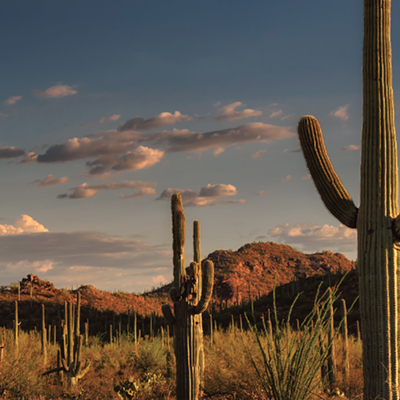To a growing number of conservationists, wildlife aficionados and eco-tourism guides, hummingbirds have likewise become a source of fascination, a conservation cause celebré and a diminutive cash cow for southern Arizona's tourist trade.
Go figure. They have color, they have flash, they have raging metabolisms and an unrivaled ferocity when it comes to food and territory, all of which makes them mesmerizing to watch.
Consider yourself lucky these aggressive critters are so tiny. If hummingbirds were raven-sized, it would be downright dangerous to walk in the woods, remarks one naturalist.
But the fact remains--they are tiny, and damn good sport to observe, whether in the forest primeval or in your backyard. Depending on the season, this region also hosts the largest diversity of hummingbird species in the United States. Call it a stroke of good geography, since Arizona lies on a major migration corridor for hummers enroute from Mexico to destinations north or vice-versa.
A few such as the violet throated Costa's stick around during much of the year. But most others are just passing through for breeding season or a quick meal. Then there are intrepid travelers like the rufous, taking marathon journeys that can reach from the mountains of central Mexico to the forests of southern Alaska.
Now we're equally fortunate that a pair of regional authors have produced two fine books on these tiny birds, appropriate for everyone from obsessive list-checkers to the casual observer.
Hummingbirds of North America is a new Peterson Field Guide by Sheri Williamson. She's a naturalist and co-founder of the Southeastern Arizona Bird Observatory, a Bisbee-based conservation and education group.
As hummingbird minutiae go, it's hard to find a better authority than Williamson, and it shows in this guide. Hummer fanatics will find the painstaking tidbits they crave--and a little bit of Latin to boot--on everything from bird distribution to arcane ornithology. Williamson is in the big leagues here, with an entire section devoted to hummingbird genera.
For example, you might not know that the genus Chlorostilbon (the Cuban, Canivet's and Golden-crowned Emeralds) "is the subject of taxonomic controversy." Or that "the status of (the Bahama Woodstar) within the woodstar-sheartail group is uncertain."
More information than you need? Perhaps. But the beauty of this book is that it covers all the academic bases without intimidating rookie birders. For the general public she offers conservation tips, and ways to attract hummers to your own patch of paradise. Through more than 220 photos and 34 color maps, the book also helps watchers easily identify species and understand why and where they're likely to appear at any given time of year. Blending these two ends of the knowledge spectrum so seamlessly is a work of supreme craftsmanship.
Also fun to read--albeit less ambitious--is Hummingbirds of the American West by Lynn Hassler Kaufman. A bit spoiled by the combination of depth and easily digestible facts in Williamson's book, Kaufman's effort seems a touch short on natural history. That said, it remains a breezy reference and provides all the information most folks will need. It's accented by beautiful photography, and a quick study of the birds we're likely to come across in these parts.
Kaufman starts with brief overview of hummingbird characteristics, which are indeed juicy. Get this: They boast the fastest wingbeats of any bird, up to 72 times per second. It's not surprising, then, that "their flight muscles account for 25-30 percent of total body weight, which can range from 2 to 8 grams, depending on the species," she writes.
There's no doubting the author's enthusiasm for birds she calls "remarkable in many ways." And there's no doubting her facts, since she's married to Kenn Kaufman, author of the birders' bible, Lives of North American Birds.
While Lynn Kaufman's book doesn't affect to be more than it is--primarily a quick tool for identifying birds and learning a bit about their habits--the thinnish volume can leave the reader wanting a bit more. Here, Williamson's Peterson Guide fits the bill in an expert way. Of course Peterson's has an ace-in-the-hole, with a long record of publishing authoritative guides on everything from advanced birding to coral reefs. They have not failed this time out.
But in the end, both new books offer fresh insights into these glittering fragments of the rainbow we're so lucky to enjoy here en masse.







